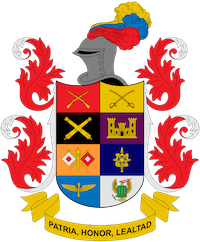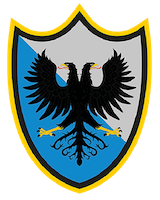Submissions
Submission Preparation Checklist
As part of the submission process, authors should check their submission for compliance with all the following elements, and submissions may be returned to authors who do not meet these guidelines.
- The submission is completely original, does not infringe on the rights of other authors, and is of an exclusive nature (has not been published, accepted for publication, or submitted for consideration to another publisher), conflict of interest, authorship disputes, and fragmentation (otherwise, an explanation has been provided in Comments to the Editor).
- Two independent files(author information and work format) were prepared in the original language of the book (Spanish or English) using the formats suggested by the Aquila Harpyia Publishing Company.
- The two files to be sent are in an editable format such as OpenOffice, Microsoft Word or Rich Text Format (RTF). In addition, they must be fully completed and comply with the parameters established in the instructions for authors (style guide and preparation of the submission).
- The work is within the focus, category and scope of the Aquila Harpyia Publishing Label, available at https://libros.esici.edu.co/index.php/aqha/about.
- All figures and tables included in the structure of the article are in color, in editable format and are located within the text and not at the end of it.
- The DOI (Digital Object Identifier) and web addresses of all references cited in the structure of the work were included, as far as possible.
- The structure of the work has been completely anonymized, eliminating any reference to the author(s), following the established instructions and ensuring a blind review.
- If there are research participants or data were collected from individuals, the institutional endorsement or informed consent duly signed by the participants has been uploaded separately. In addition, a note was included in the Method section explicitly stating how the ethical standards of the research were followed and how informed consent was obtained from the research participants. Without these documents and note the manuscript will not be reviewed.
- Authors: to avoid research misconduct, authors should consult on the following international standards: research fraud, improper experimentation with or on animals and humans.
- The work contains all the required sections and these are structured correctly (see Guidelines for writing the introduction, theoretical framework, method, discussion, conclusions and references sections).
- In the case of including self-citations, these should not exceed 10% of all the material cited throughout the work. Self-citations are cited correctly, since failure to do so is also considered plagiarism.
- The language used in the work is inclusive, recognizes diversity, conveys respect for all people, is sensitive to differences and promotes equal opportunities.
STYLE GUIDE
In order to homogenize the presentation of the different works, the editorial committee considers it pertinent to recommend that the person or persons interested in submitting a work for publication in the publishing house adhere to the following conditions:
- Send the work in magnetic media through the Open Monograph Press (OMP) platform of the Aquila Harpyia Editorial Label and must correctly follow the style guide.
- The document must comply with the following characteristics:
- Font and size. Text, tables and illustrations should be presented in Times New Roman 12-point font.
- Be paginated at the bottom right of each page.
- Line spacing. The text should have a 1.5 line spacing.
- References. Aquila Harpyia Press uses the American Psychological Association (APA) 7th edition (2020) style.
- All works must include the following information: title of the work, name of the author(s), abstract (Spanish and English), key words (maximum five) (Spanish and English), content and development of the book, among others.
- In the title of the book a footnote should be inserted with an asterisk indicating or explaining the origin of the work (reasons or motives and type of work).
- For each author, a footnote containing the following information should be added with an asterisk:
- Full name(s) and surname(s)
- Undergraduate degree(s) and institution, city and country.
- Postgraduate degree(s) and institution, city and country.
- Position and institution, city and country.
- Unique ORCID identification codes (each author must have an individual code, in case you do not have one, you can generate one at the following link: https://orcid.org/register).
- Personal or institutional e-mail.
- The summary of the book and book chapters should not exceed 300 words.
- The criterion for choosing keywords is that they guarantee the visibility of the book in search engines and databases. These words are used by libraries and publishers' subject indexes to classify works, thus guaranteeing that when someone searches by subject they can access the book.
- Explanatory notes. Footnotes should be restricted as much as possible and should only be used to incorporate required explanations. Citation and reference cases should be made within the body of the book in the style of the APA norms (7th edition).
- Abbreviations. They should be used sparingly. For abbreviations, the nomenclature approved by the international union of the respective discipline should be used. They should be defined the first time they appear in the text and always be used thereafter to refer to the respective term. They should not appear at the beginning of a sentence or in the title and should not be used in the abstract.
- Equations. If the manuscript includes equations, they should be left and numbered consecutively (in parentheses, right justified). Use an equation editor. The meaning of each symbol in the equation should be made clear in the text. Example:
- y = mx + b (1)
- Where: y is the Abscissa, m is the slope of the line, x is the concentration of cells in g/ml and b is the intercept over y.
- Tables and figures. They should be elaborated according to APA norms (7th edition) and sent in editable format. They must be duly numbered and mentioned in the text of the book. Each figure should be accompanied by the corresponding caption (in Times New Roman 11-point font and 1.5 line spacing). The legend should be sufficient so that the reader does not have to go to the text to understand its importance and result. Abbreviations and acronyms should be explained in the legends. If tables and figures from other sources are used, they should be copied exactly from the original and the source should be cited according to APA standards. When the tables and figures are the authors' own elaboration, based on the research, "Source: own elaboration" should appear as the last line of the legend of tables and figures.
- Illustrations, maps and drawings. They must have a minimum resolution of 600 dpi and be in color. Maps must contain legend, cardinal points and scale, when relevant. Illustrations with specific copyright restrictions must have their respective legal authorizations, which must be attached to the declaration of originality and assignment of rights form.
- References. Authors should use APA 7th edition style. In this reference model, the authors' surnames (without initials) and the year of publication are given within the main body of the text, with specification of precise pages in case of textual citations. For example: "Caldas (1815/1966) argues that [...]" or "[...] (Caldas, 1815/1966, pp. 57-58)". At the end of the main text, under the heading "References", only the sources cited should be listed in alphabetical order. Authors should ensure that all works, including newspaper articles, government documents and interviews, are fully referenced.
- Citations. Double quotation marks ('text') are used for textual citations whose length does not exceed 40 words. Single quotation marks ('text') should be used for citations within citations. To mark an omission in a citation, use the ellipsis between parentheses "(...)". If the citation is longer than 40 words, it should appear as a separate paragraph, indented five spaces, without quotation marks and in 11-point font size.
- Words, citations and texts in foreign languages. Individual words and short phrases in languages other than Spanish should be in italics. Texts in foreign languages should be accompanied by their respective translation in parentheses. The names of institutions and universities in foreign languages, among others, are written without italics, as they are proper names.
- All works submitted to the publishing house will be evaluated by academic jurors, specialists or anonymous referees who are experts in the subject (in the double-blind mode), and the decision to publish them will be subject to the results of the anonymous evaluations. The editorial committee will inform the authors of the results of the evaluation in a timely manner.
- Those who publish in ESICI's Aquila Harpyia Publishing Label assign their patrimonial rights to the institution; consequently, they authorize ESICI to disseminate the books and book chapters of their authorship through any printed or electronic media, including the Internet, as it deems appropriate.
- The book must be accompanied by written proof, signed by the authors, that it is unpublished, is of their authorship and has not been proposed for publication in any other media.
Copyright Notice
Copyright 2024 ESICI's Aquila Harpyia Publishing Label
This work is licensed under an international license Creative Commons Reconocimiento-NoComercial-SinObraDerivada 4,0.
Privacy Statement
The names and email addresses entered in this press site will be used exclusively for the stated purposes of this press and will not be made available for any other purpose or to any other party.






